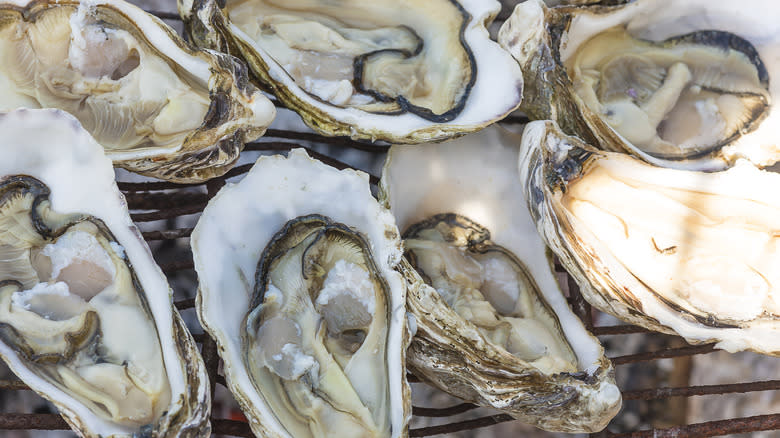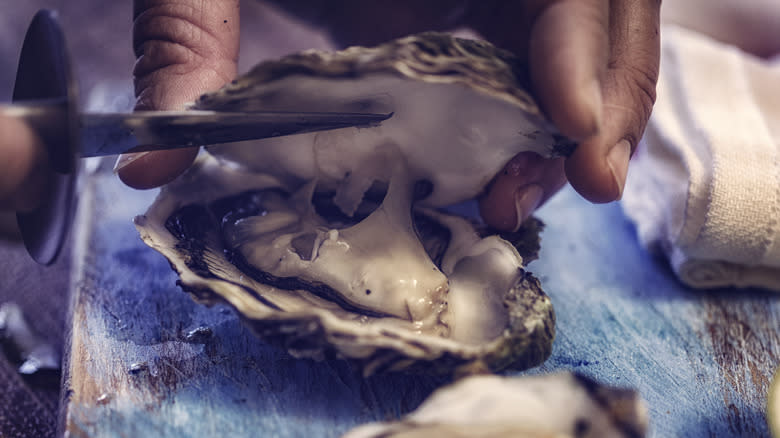Signs A Freshly Shucked Oyster Has Gone Bad, According To An Expert

When it comes to oysters, or seafood in general, safety is a hot-button issue. Raw oysters, for example, are among the most likely restaurant foods to cause food poisoning, causing folks to suggest that you should never order this shellfish raw at a restaurant. Some oysters carry vibrio vulnificus, a harmful bacteria that occurs in marine ecosystems, and it's far more common in raw oysters. Vibrio bacteria should be killed during the cooking process (via CDC) but even when fried a bad quality oyster can lead to an upset stomach or simply a poor taste experience. While one is clearly much worse than the other, neither is an ideal scenario.
Because of the precarious nature of sampling oysters, it's understandable that people would take extra care to check their food before eating it. Mashed spoke to Calvin Hwang, executive chef at Figure Eight in New York City, about this very issue. Hwang said that there are some ways to check an oyster's quality before picking up that shell and slurping it down. The key things to look out for when examining your freshly shucked oyster, in Hwang's experience, are size, moisture, and scent.
Read more: The Most Overrated Chain Restaurants In The US, According To The Mashed Staff
What To Look For In A Bad Oyster

You can tell a lot about an oyster just by looking at it, according to Hwang. "A perfect oyster is plump, shiny, and full of liquid," he said. If your oyster is dry and shriveled, it doesn't necessarily mean it's rotten or dangerous to eat, but it's still not a good sign. It could mean "a myriad of things," Hwang told Mashed, "but ultimately it's just gross to look at and eat." You should also look out for pieces of shell, as they can end up falling into the meat of an oyster if it hasn't been shucked correctly. This will lend an unpleasant, gritty taste and texture to your oyster.
Smell can also be an indicator as to whether or not an oyster is safe to eat. In Hwang's words, a good oyster "should smell like salty ocean water." In other words, it should smell of very little. However, when it comes to vibrio vulnificus, you won't be able to sniff out trouble. According to the FDA, vibrio vulnificus can't be "seen, smelled, or even tasted." If an oyster smells like sulfur or just really strongly of fish, though, it's probably best to put it aside. Even if it's not contaminated or rotten, it's still going to taste horrid.
When you enjoy oysters, you'd probably prefer they don't come with a side of foodborne illness. In this regard, safe is immensely preferable to sorry.
Read the original article on Mashed.

